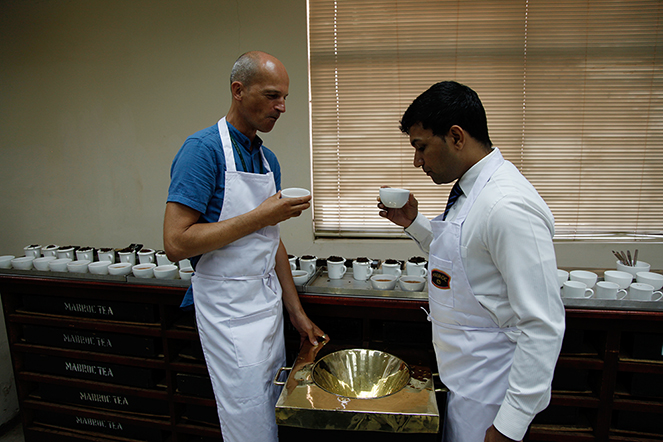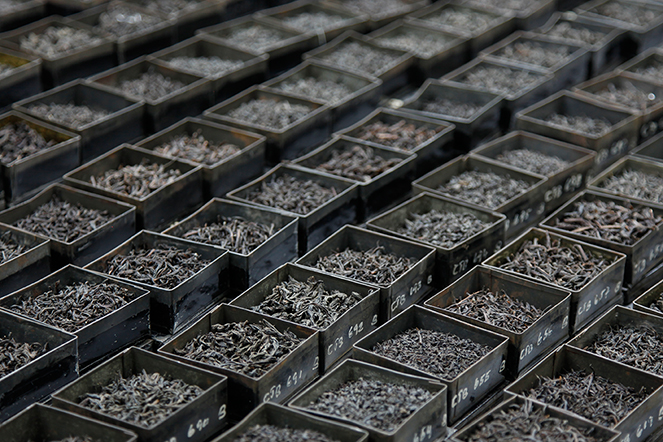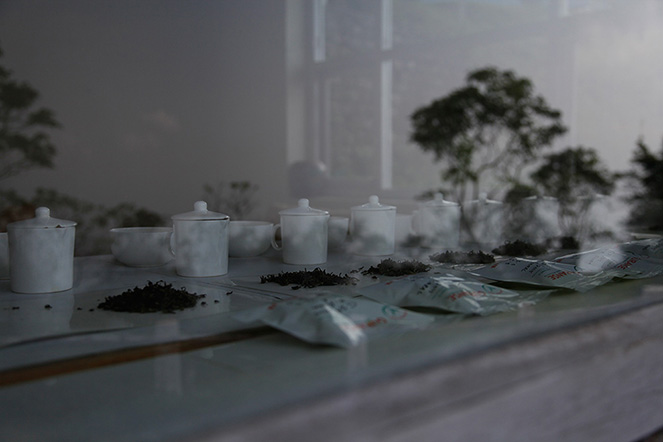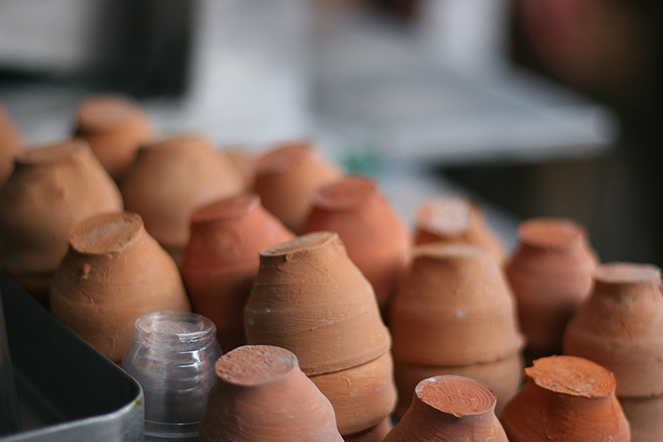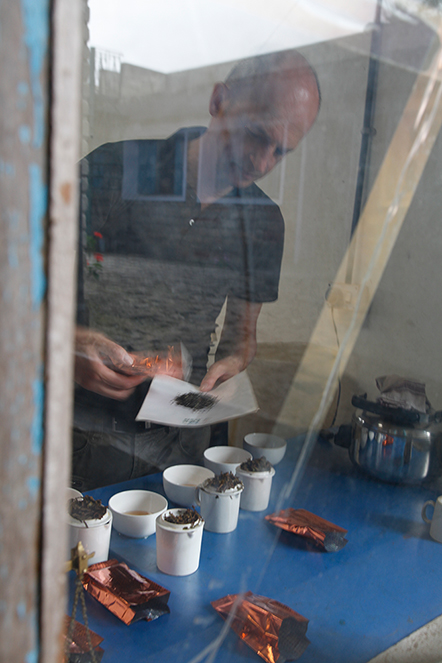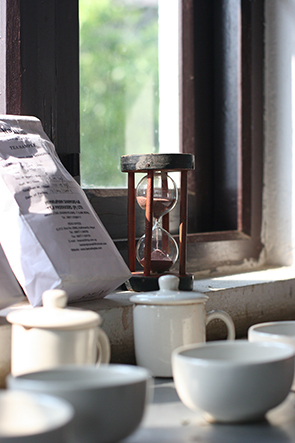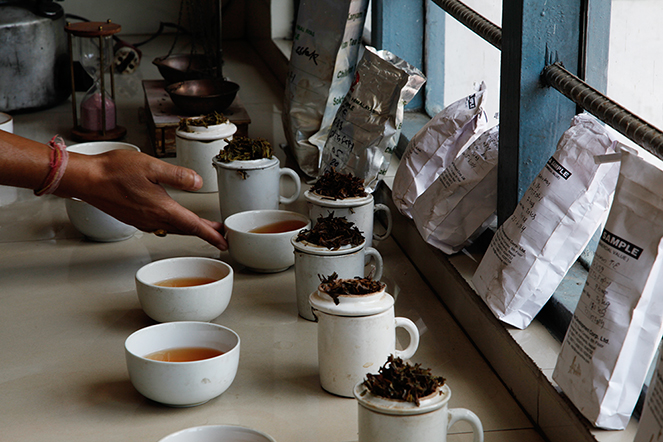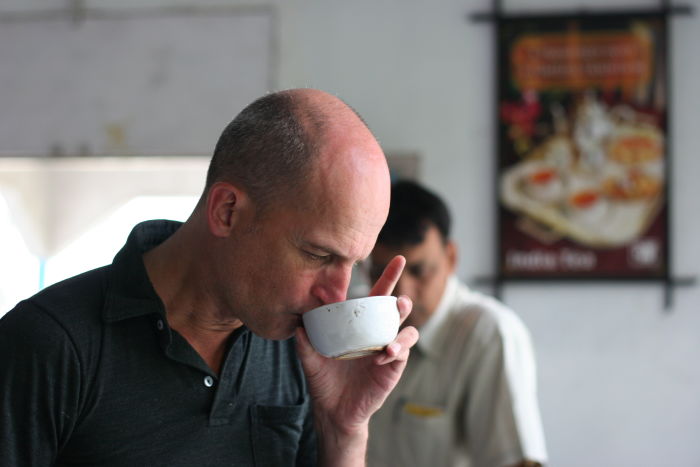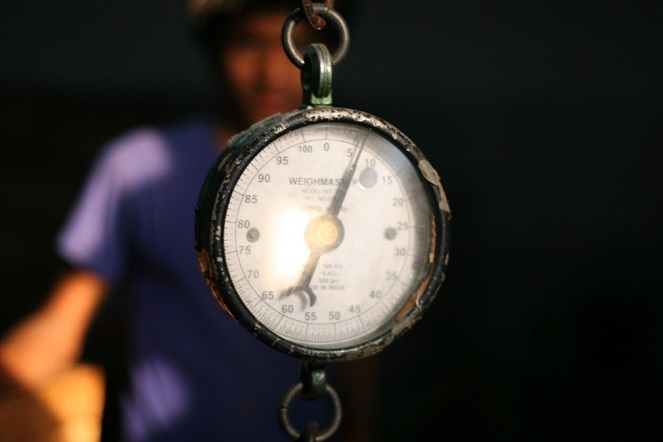It is no more difficult to taste thirty or forty teas than to taste two or three. On the contrary: you move quickly from one to the next, you spit each one out, you concentrate so you can compare them, and very quickly you know which one you prefer.
Tea Tasting
Tea auctions in Sri Lanka
Tasting and contemplating
The advantage of photographing a window is that you can layer two images: here, the tasting set being prepared, and the landscape reflected in the glass. It’s fun to combine and merge the two views. The meaning of the tasting becomes clearer: we drink the tea, which comes from nature, surrounded by the land from which it originated.
Unfired clay cups of Kolkata
Looking is the first step in tasting
Infusion time for first-flush Darjeelings
First-flush Darjeelings should be infused for between 3:30 and 4 minutes. The easiest way is to set your timer for 3:45. You have to be accurate when preparing this type of tea. If you want to retain a good balance between the aromatic bouquet, texture and flavour, you must stop the infusion in time. What you need is to give the aromas time to develop, while keeping the astringency and bitterness at a delicate level so they prolong the perception of aromas without overpowering them.
les prolongent la perception des parfums, sans leur faire ombrage.
Tasting the spring teas
There are many teas to taste at this time of year. From now and for the next few months, I’ll be tasting dozens of teas every day, and up to 100 or 150 at times. I taste them “blind” because I don’t want to be influenced by my friendship with particular farmers. The name of the garden is hidden so that the initial selection is based solely on a sensory analysis. To express my preference, I make this gesture, shared by many planters: pushing the cup gently with the fingertips, palm facing upwards.
Knowing how to appreciate bitterness
Bitterness is the only intelligent flavour, Olivier Roellinger told me as we tasted a selection of teas together, when I warned him that some darjeelings have a touch of bitterness.
It is a flavour that, unlike sweetness, needs winning over, taming. It can be off-putting, but when we know how to appreciate bitterness, it offers such richness, such delight!
And Olivier Roellinger talked to me about the famous Italian gastronomy, a fine example of a bitter cuisine.
Two “grand cru” teas from Nepal to try soon: Mist Valley and Sandakphu
Three plantations in Nepal are currently producing teas that in my view are worthy of the “grand cru” appellation. But in the past year, it has to be said that Guranse, Kuwapani and Jun Chiyabari are no longer alone in offering exceptional teas. Mist Valley and Sandakphu, both situated in Ilam Valley, are making teas of remarkable flavour quality. These teas will be ready to try in a few days, and are excellent value for money.

